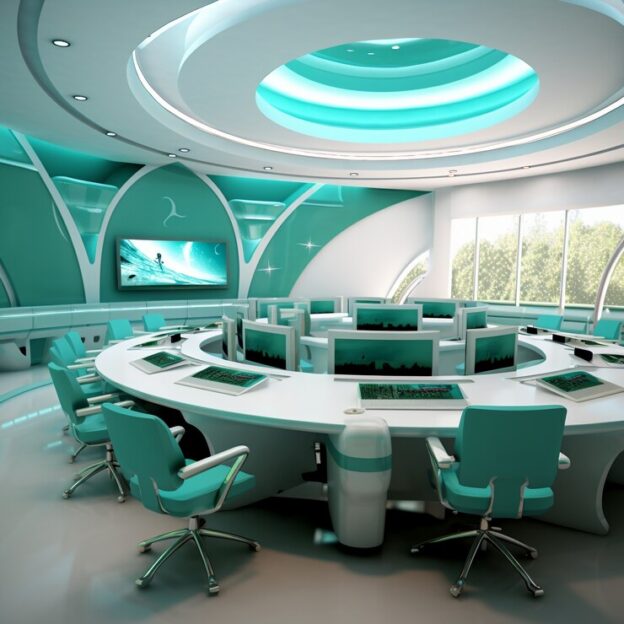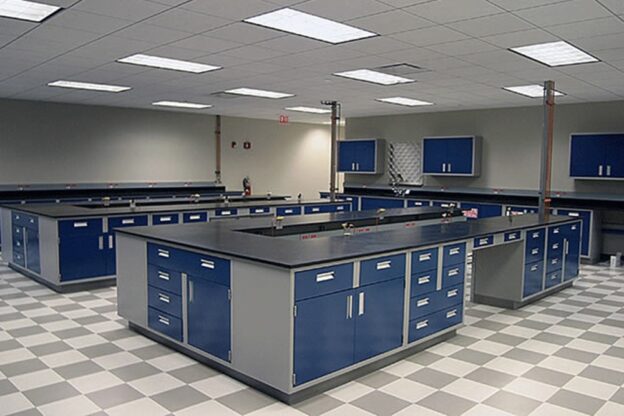Scientific laboratories have long been the birthplace of groundbreaking discoveries and innovations. Yet, the image that often comes to mind is one of isolated researchers, hunched over their benches, working independently. This traditional setup, however, is evolving. Modern science increasingly recognizes the value of collaboration, and lab furniture is playing a pivotal role in fostering these collaborative environments.
The Shift Towards Collaboration
The shift towards collaborative science is driven by the complexity of modern research problems, which often require interdisciplinary approaches and diverse skill sets. Collaboration encourages the sharing of ideas, cross-pollination of knowledge, and faster problem-solving. Consequently, the physical layout and furniture of laboratories are being reimagined to support these new ways of working.
Designing for Interaction
Flexible Workstations
Traditional lab benches are being replaced by flexible workstations that can be easily reconfigured to accommodate different group sizes and project needs. Modular lab furniture allows for quick adjustments, enabling researchers to switch between solo tasks and team-based activities seamlessly. This adaptability not only maximizes the use of space but also encourages spontaneous interactions and discussions.
Shared Spaces
Integrating shared spaces such as common tables, lounges, and breakout areas within the lab environment fosters informal interactions. These areas provide a venue for brainstorming sessions, quick meetings, and relaxed conversations that can spark new ideas. Comfortable seating, whiteboards, and even writable walls can turn any corner into a hub of creativity and collaboration.
Digital Integration
Incorporating technology into lab furniture is another key trend. Workstations equipped with screens, video conferencing tools, and network connectivity facilitate remote collaboration and data sharing. Digital integration ensures that teams, whether local or dispersed, can work together effectively, accessing and analyzing data in real time.
Ergonomics and Well-being
A collaborative environment also considers the well-being of researchers. Ergonomically designed furniture reduces physical strain, promoting better posture and comfort during long hours of work. Adjustable chairs, height-adjustable benches, and anti-fatigue mats contribute to a healthier workspace, which can enhance productivity and collaboration by keeping researchers energized and focused.
Case Studies: Innovative Lab Designs
The Francis Crick Institute, London
The Francis Crick Institute in London is a prime example of a lab designed for collaboration. Its open-plan layout, with glass walls and shared spaces, encourages transparency and interaction among researchers. Flexible lab benches and communal areas are strategically placed to promote both planned and impromptu meetings.
MIT.nano, Massachusetts Institute of Technology
MIT.nano’s design emphasizes flexibility and connectivity. Its labs feature movable benches and walls, allowing spaces to be quickly reconfigured. The integration of advanced technology supports both in-person and remote collaboration, making it a cutting-edge environment for interdisciplinary research.
Conclusion
Creating collaborative environments with lab furniture is about more than just changing the physical setup; it’s about fostering a culture of teamwork and innovation. By designing spaces that are flexible, shared, and technologically integrated, we can enhance the way scientists work together, driving forward the pace of discovery. As the landscape of scientific research continues to evolve, so too must our approach to the environments in which it takes place. Embracing these changes can lead to more dynamic, productive, and innovative research outcomes, truly taking us beyond the bench.

